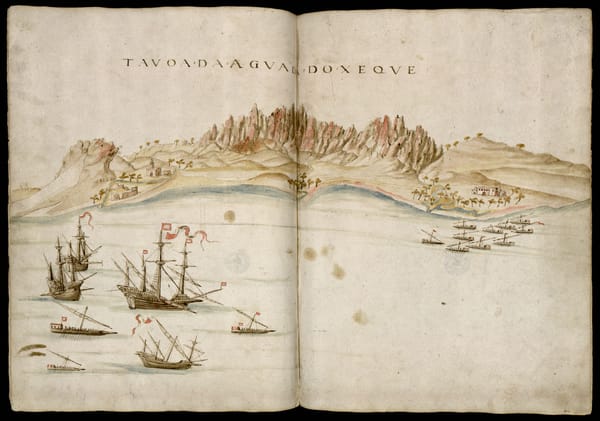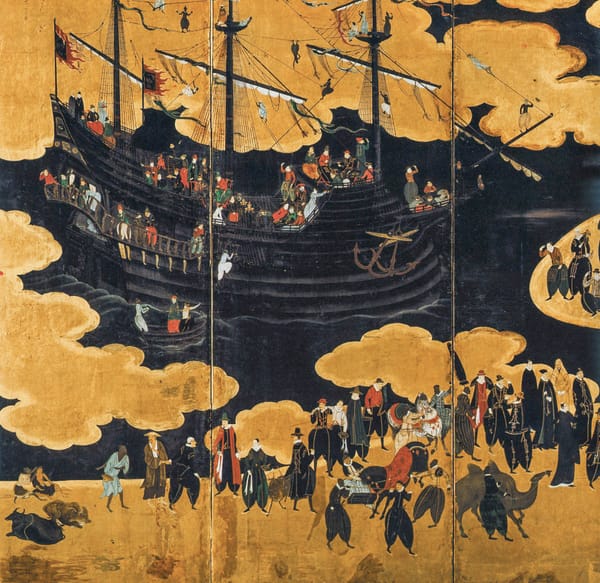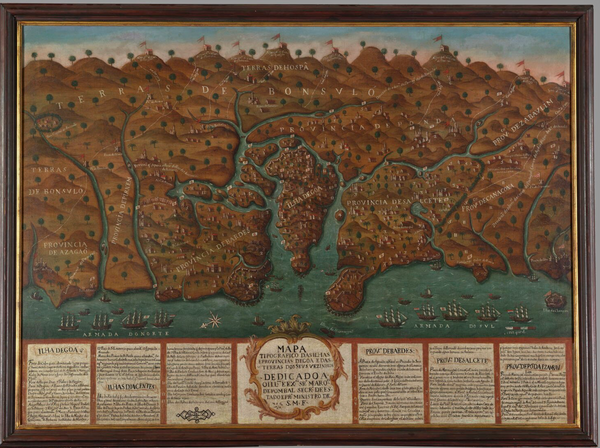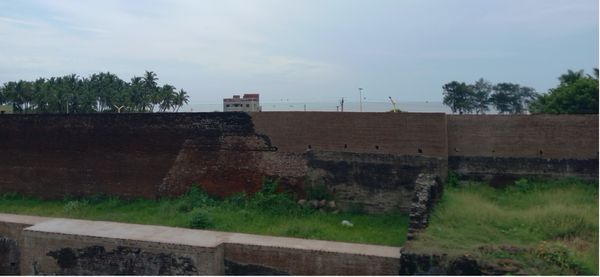Mapping Early Modern Monetary Pluralism
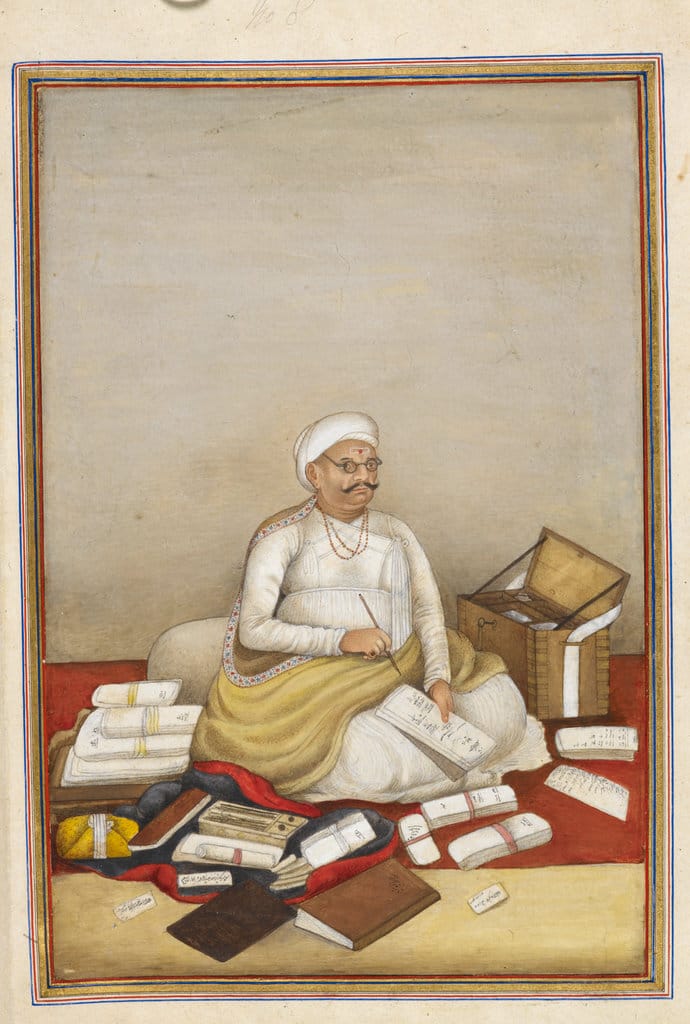
In 1789 the Spanish political economist and merchant Tomás Antonio de Marien y Arróspide published an enormously ambitious treatise cataloging the world’s currencies (Marien y Arróspide, Tratado general de monedas). Over previous decades Marien had acquired some experience trading in the Atlantic world (Goenaga, “Tomás de Marien y Arróspide”). Yet Marien’s lack of first-hand knowledge about Asia did not prevent him from speaking with conviction about the panoply of currencies on offer in its maritime reaches. For example, Marien's description of the currencies circulating in Ottoman Basra (Bassora) was highly nuanced, sensitive to the complexities involved in exchange-rate conversion in this ever-changeable entrepot (figure 1).
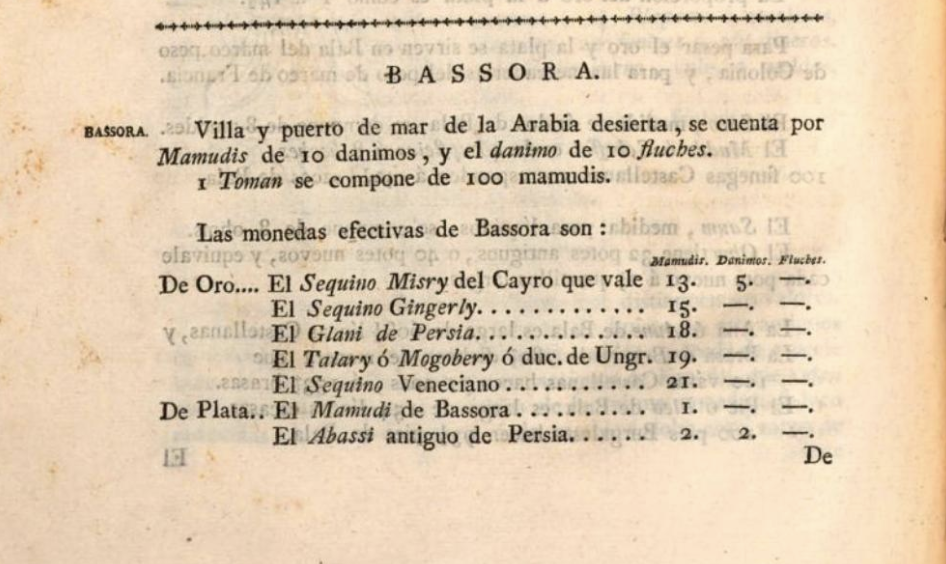
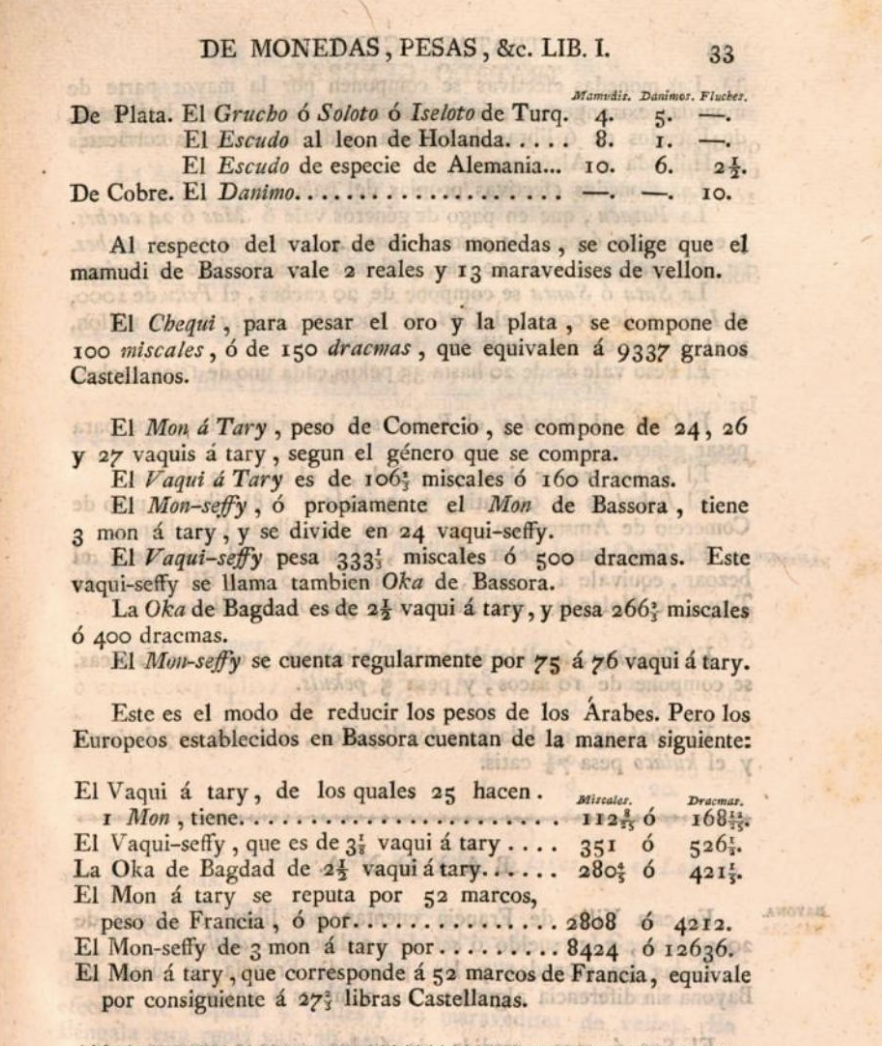
Marien was able to construct his encyclopedic account of Asia’s currencies because such manuals were, in fact, a dime a dozen in the European Republic of Letters. An example from nearly a century earlier is an anonymous 1691 Dutch account, Uytrekening van de Goude en Silvere Munts... (figure 2). The volume presumably had a broader readership outside the Netherlands, but it was used by agents of the Dutch East India Company (VOC), and indeed printed by its resident typographer in the town of Middleburg. Of Basra's currencies the text had far less to say than Marien, but concerning currencies then en vogue in places like Ahmedabad and Broach the volume expounds at length. Unlike Marien's book, this was a volume interested only in Asia.
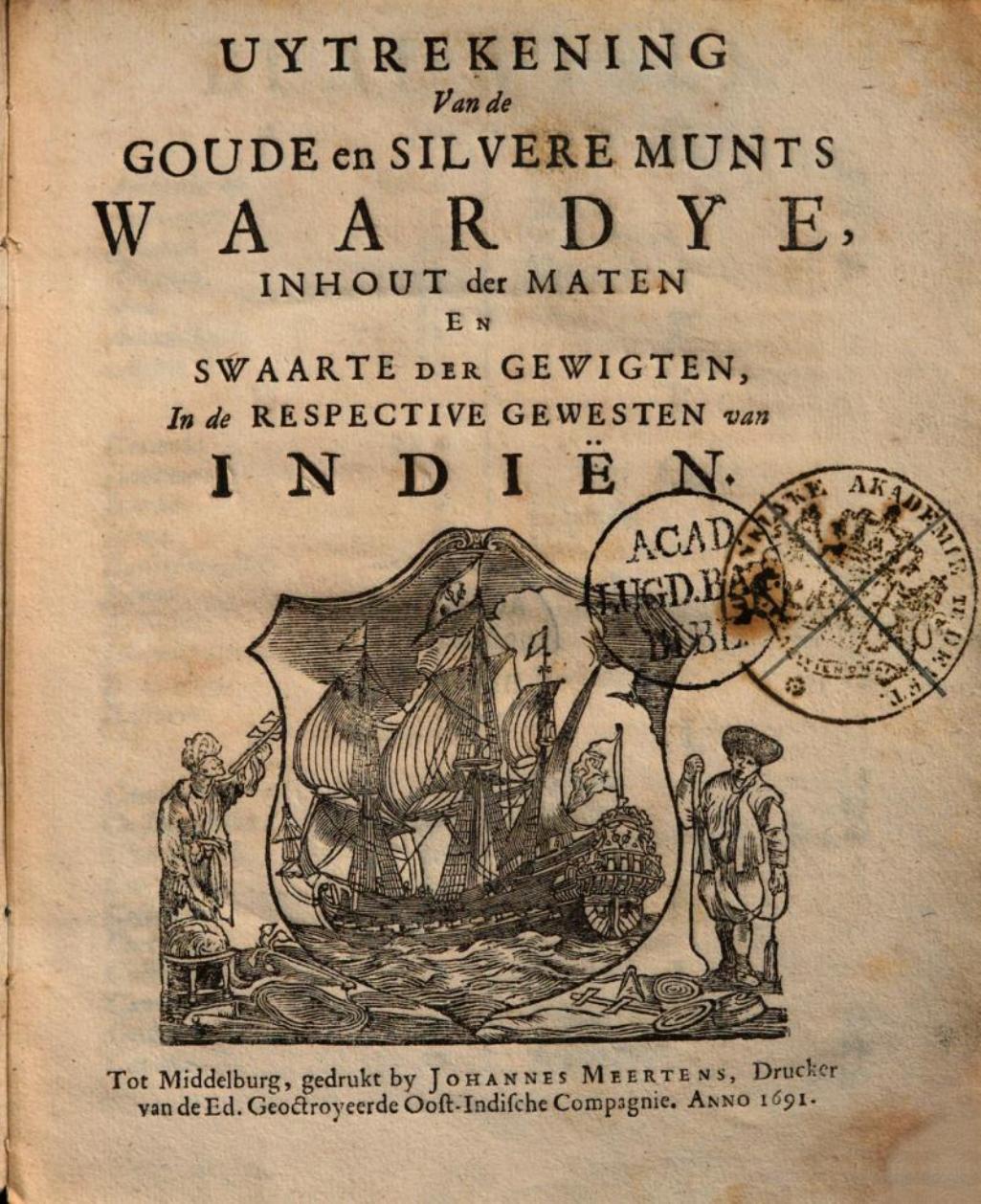
The sheer profusion of currencies on offer in the Indian Ocean - many of which were not even metallic, but in the form of cowrie shells (figure 3) - throws cold water on any narrative that stresses the fundamental cultural or structural unity of this vast region. To be sure, a pioneering recent study of currencies across maritime Asia goes as far to identify the existence of an "Indian Ocean World (IOW) currency system" (Serels, "The Indian Ocean World Currency System"). This framework is attentive to the plethora of currencies passing throughout these spaces and furnishes a useful model for appreciating points of monetary convergence and divergence. Much more, however, remains to be done to put some skin on the bones of this framework. In particular, the logistical and epistemic difficulties involved in moving between a multiplicity of currencies have yet to be fully appreciated by historians.
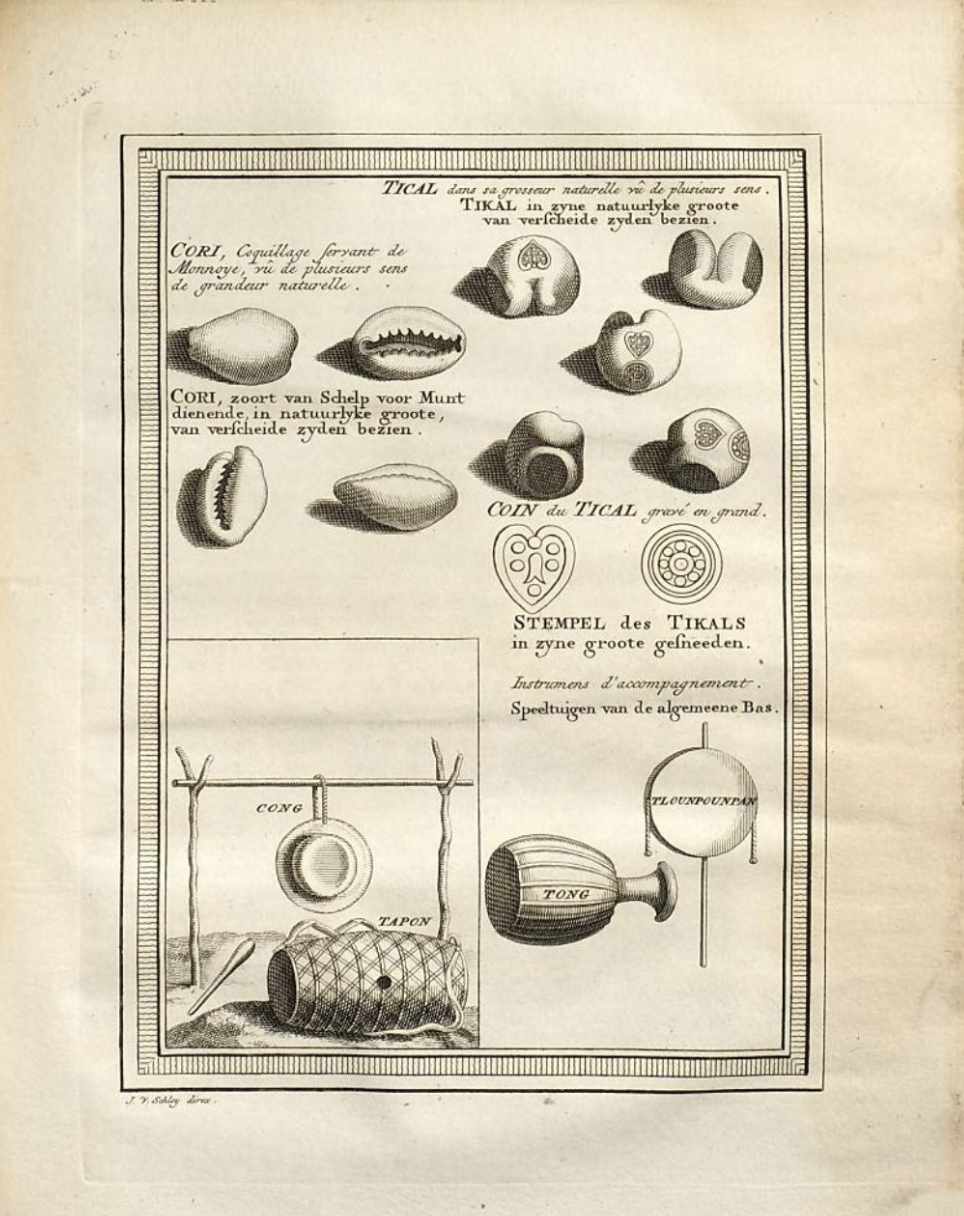
In order to better track early modern Asia's monetary pluralism, the team at CAPASIA is currently building a database that chronicles the ocean's constellation of currencies. By so doing, our goal is to provide researchers with a better sense of the fissures in the map of Indian Ocean trade and thereby to encourage a deeper reflection on the inordinate focus on connection in the historiography of the region. Interested readers can track our progress at the following link:
Sources
Historische beschryving der reizen. Of nieuwe en volkoome verzameling van de aller-waardigste en zeldsaamste zee- en landtogten, Volume 14 (Amsterdam: S. Schouten, 1756),
Uytrekening van de goude en silvere munts waardye, inhout der maten en swaarte der gewigten in de respective gewesten van Indiën (Middleburg: Johannes, Meertens, 1691).
Tomás Antonio de Marien y Arróspide, Tratado general de monedas, pesas, medidas y cambios de todas las naciones reducidas a las que se usan en España (Madrid: D. Benito Cano, 1789).
Steven Serels, "Introduction: The Indian Ocean World Currency System," Steven Serels and Gwyn Campbell eds., Currencies of the Indian Ocean World (Cham: Palgrave Macmillan, 2019), 1-16.



